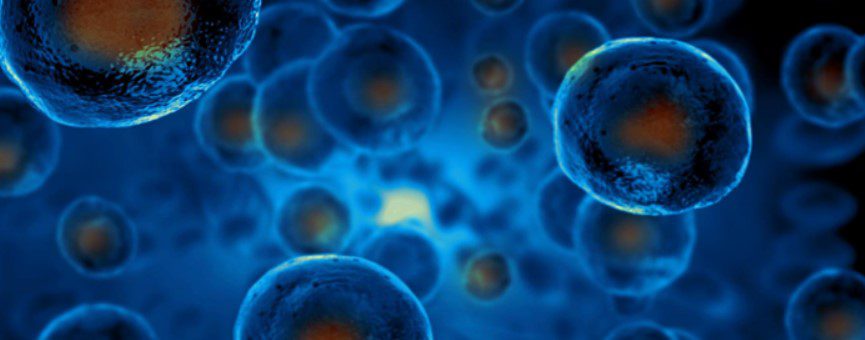
by admin | Apr 17, 2025 | ALS, Alzheimer’s Disease, Neurodegenerative Diseases, Parkinson's Disease, Stem Cell Research, Stem Cell Therapy
Neurodegenerative diseases like Parkinson’s disease (PD), Alzheimer’s disease (AD), and amyotrophic lateral sclerosis (ALS) are among the most challenging medical conditions to treat. These disorders involve the gradual breakdown and loss of neurons in specific areas of the nervous system, leading to symptoms such as memory loss, paralysis, and impaired movement or cognition.
Despite decades of research and billions of dollars in clinical trials, researchers have yet to find a cure for these conditions, and even effective treatments remain limited. As a result, neurodegenerative diseases place a significant emotional, physical, and economic burden on individuals, families, and healthcare systems worldwide.
In this review, Sivandzade et al. summarize the current knowledge of stem-cell-based therapies in neurodegenerative diseases and the recent advances in this field.
The Potential of Stem Cells in Treating Neurodegenerative Disorders
In recent years, regenerative medicine, particularly stem cell therapy, has emerged as an exciting new frontier in the treatment of neurodegenerative diseases. Stem cells have the remarkable ability to become various types of specialized cells in the body. In the context of neurodegenerative diseases, they may be able to repair damaged tissue, replace lost neurons, or create a healthier environment in the brain or spinal cord that helps preserve existing cells.
This unique potential has led researchers to explore whether stem cells could help slow disease progression, reduce symptoms, or even restore lost function in patients affected with these conditions.
Stem Cell Therapy Approaches in Neurological Disorders
Stem cell therapy strategies for neurodegenerative diseases typically fall into two main approaches. The first involves directly replacing the specific types of neurons that are lost during the disease process. For example, researchers aim to generate dopamine-producing neurons for patients with PD or restore damaged motor neurons in people with ALS. The second approach focuses on environmental enrichment, where stem cells are used to support the body’s own repair mechanisms. According to the authors, this could involve delivering neuroprotective growth factors like brain-derived neurotrophic factor (BDNF) or glial cell line-derived neurotrophic factor (GDNF), which help nourish and protect surviving neurons.
Recent research has also explored combining both strategies – using stem cells to replace lost cells while simultaneously enhancing the surrounding environment.
Stem Cell Therapy for Parkinson’s Disease
In Parkinson’s disease, the main issue is the gradual loss of dopamine-producing neurons in a part of the brain called the substantia nigra. This loss leads to symptoms like tremors, muscle rigidity, and slowed movement, usually appearing in people between their 50s and 70s.
Current treatments focus on increasing dopamine levels or using deep brain stimulation to control symptoms. While helpful, these options do not stop or reverse the underlying neuron loss. Stem cell therapy offers a promising alternative by aiming to replace the lost dopamine neurons or protect those that remain.
Recent studies have used embryonic stem cells (ESCs) to produce new dopamine-producing cells that can be transplanted into animal models of PD. These cells have shown the ability to migrate to damaged areas and improve motor function. However, ESCs come with ethical concerns and a risk of tumor formation, which has limited their use in human trials.
Mesenchymal stem cells (MSCs) have also shown potential in PD animal models by helping rebuild damaged dopamine nerve networks. Additionally, induced pluripotent stem cells (iPSCs) – adult cells reprogrammed to act like embryonic stem cells – have recently gained attention because they can be used to generate personalized dopamine-producing neurons without the ethical concerns associated with ESCs. These iPSC-derived neurons have shown promising results in animal models, surviving and integrating into the brain while improving motor symptoms.
Stem Cell Therapy for Alzheimer’s Disease
For patients with Alzheimer’s disease, the situation is more complex. AD is the most common neurodegenerative disease, affecting over 5 million Americans. It leads to memory loss, confusion, impaired judgment, and eventually complete cognitive decline. The disease is marked by the buildup of two harmful proteins in the brain: amyloid-beta, which forms plaques outside neurons, and tau, which forms complex tangles inside them. These protein abnormalities disrupt communication between brain cells and eventually cause them to die. Current medications focus on improving symptoms and slowing progression, but they do not reverse the damage.
Stem cell therapy for AD focuses on restoring lost neurons and improving the brain’s ability to function and heal. Studies using human neural stem cells in animal models of Alzheimer’s have shown that these cells can improve learning and memory, possibly by enhancing synaptic plasticity and increasing the production of proteins involved in cognitive function.
However, challenges remain, including understanding how these stem cells exert their effects and controlling the formation of unwanted cell types. Researchers are currently exploring the use of nerve growth factor (NGF) in combination with stem cells to protect existing neurons and encourage the growth of new ones.
NGF gene therapy has shown promise in early trials and may help amplify the positive effects of stem cell treatment.
Stem Cell Therapy for ALS (Amyotrophic Lateral Sclerosis)
Amyotrophic lateral sclerosis, or ALS, is another devastating condition in which motor neurons in the brain and spinal cord gradually die, leading to muscle weakness, paralysis, and ultimately death, typically within a few years of diagnosis. Most cases are sporadic and occur without a clear genetic cause, though some cases are linked to inherited gene mutations. Because multiple mechanisms may contribute to the disease, including protein misfolding, oxidative stress, and inflammation, it has been extremely difficult to find effective treatments.
Stem cell research in ALS is still in the early stages, but it holds potential. The goal is not necessarily to replace the lost motor neurons – which is extremely difficult – but rather to create a supportive environment that preserves the neurons that remain and slows disease progression.
Some clinical trials have tested the use of MSCs and neural stem cells (NSCs) injected directly into the spinal cord. Results from these early studies suggest that the treatments are safe and may help stabilize function in some patients. In animal models, stem cell transplants have been shown to reduce inflammation, promote motor neuron survival, and improve muscle strength.
As with other neurodegenerative diseases, the success of stem cell therapy in ALS will likely depend on a deeper understanding of disease mechanisms and finding the best ways to target and deliver treatment.
The Future of Stem Cell Therapy for Neurodegenerative Diseases
While stem cell therapy is not yet a viable cure for neurodegenerative diseases, Sivandzade et al. believe it represents one of the most promising paths forward. The ability to regenerate or repair damaged tissue offers hope where traditional therapies have fallen short. As research continues to advance, more clinical trials are likely to explore the safety and effectiveness of these treatments, along with better methods for personalizing therapies and improving the delivery of stem cells to targeted areas within the nervous system.
Source: Sivandzade F, Cucullo L. Regenerative Stem Cell Therapy for Neurodegenerative Diseases: An Overview. Int J Mol Sci. 2021 Feb 22;22(4):2153. doi: 10.3390/ijms22042153. PMID: 33671500; PMCID: PMC7926761.

by admin | Feb 15, 2024 | Peptides, ALS, Alzheimer’s Disease
Alzheimer’s disease (AD) and amyotrophic lateral sclerosis (ALS) are two of the more common neurodegenerative diseases, with nearly seven million people in the US living with the conditions in 2023. While AD is more prevalent than ALS, they are both characterized by the progressive loss of specific neurons and glial cells in the central nervous system.
Research has demonstrated that the onset and progression of neurodegenerative diseases appear to be delayed or improved by the application of neurotrophic factors and that the derived peptide factors from these neurotrophic factors have been found to potentially restore neuronal function, improve behavioral deficits, and prolong their survival.
In this review, Ciesler and Sari review the role of trophic peptides in the improvement of AD and ALS with the goal of developing a better understanding of potential therapies for these neurodegenerative diseases.
While neurodegenerative diseases, including AD and ALS, are well documented to result in debilitating loss of memory and motor function, respectively, the specific mechanisms of action in these diseases are yet to be fully understood. However, research has found that the potential underlying mechanisms can be divided into two categories. The first, which is unique to each neurodegenerative disease, is a specific trigger that activates cell death machinery and the second, which appears to be universal among neurodegenerative diseases, is a directorial process to complete death of a neuron.
While there are currently no effective drugs for the treatment of neurodegenerative diseases, treatments of the symptoms associated with neurodegenerative diseases include neuroprotective factors, encompassing neurotrophins, and neuroprotective peptides. The authors focus this review on NAP peptide derived from activity neuroprotective protein and ADNF-9 peptide derived from activity-dependent neurotrophic factor (ADNF); both of these peptides have been shown to enhance cell survival and outgrowth of dendrites in the form of D-acid analogues.
NAP’s parent protein, ADNP, is essential for brain development and was found to protect neurons against severe oxidative stress. Studies examining NAP have found them to protect against neurotoxins while not affecting cell division. Considering these findings, NAP is now in phase II clinical trials with a primary focus on AD-related cognitive impairment. Additional studies are also evaluating the effects of NAP in ALS models associated with cytoskeletal dysfunction. NAP has been found to extend life span in ALS mouse models when administered prior to disease onset.
ADNF is released in response to vasoactive intestinal peptide that protects neurons from tetrodotoxin-induced cell death and is suggested to be essential for neuronal survival. ADNF-9 showed greater prevention of cell death associated with stress than other ADNF peptides; additional studies demonstrate that ADNF-9 suppressed SOD-1-mediated cell death. While prolonged survival of ALS mouse model was reported to be marginal, the authors highlight that the study did provide insight into a possible treatment for ALS.
The authors also highlight colivelin, a hybrid synthetic peptide of ANDF-9 and humanin, which was found to provide neuroprotection against AD-related memory loss and have a more potent neuroprotective effect than humanin and ADNF-9 when they are tested alone against neurotoxicity.
Ciesler and Sari conclude that in contrast to neurotrophic factors these trophic peptides have the ability to cross the blood-brain barrier for efficacy and have potential for future treatment of ALS and AD.
Source: “Neurotrophic Peptides: Potential Drugs for Treatment of Amyotrophic ….” 8 Apr. 2013, https://www.ncbi.nlm.nih.gov/pmc/articles/PMC3686488/.

by Stemedix | Dec 11, 2023 | Stem Cell Therapy, Alzheimer’s Disease, Autoimmune, Health Awareness, Osteoarthritis, Parkinson's Disease
Treatment of injuries and damage to organs and other tissues as a result of the aging process or conditions has often relied on managing symptoms. By offering painkillers and steroids, healthcare providers can keep you more comfortable, but they are not targeting the cause of the problem. This means you have to keep relying on medications. One option more people are exploring is regenerative medicine, also known as stem cell therapy. This type of regenerative medicine offers the chance to treat the underlying cause of the issue so that you can achieve lasting relief. In this article we will discuss how does stem cell therapy work?
What Is Stem Cell Therapy?
Stem cell therapy utilizes stem cells, which are those that create specialized cells. They can regenerate damaged or dying cells. Although you retain stem cells throughout your life, the aging process can make them less effective. This aging can lead to injuries that don’t heal completely, causing chronic pain and many other problems.
The goal of stem cell therapy is to amplify your body’s natural healing processes. To do this, it relies on stem cells.
In stem cell therapy, these cells are often harvested from the patient’s own body or from donors, and then administered to the affected area or systemically. The goal is to encourage tissue regeneration, repair damaged cells, and promote healing. Stem cells can differentiate into the specific cell types needed to replace or repair damaged tissues, making them a promising treatment for a wide range of conditions.
Stem cell therapy has shown potential in treating conditions such as heart disease, neurological disorders (e.g., Parkinson’s and Alzheimer’s disease), autoimmune conditions, and orthopedic injuries.
Benefits of Stem Cell Therapy
Stem cell therapy is a less invasive option than many other therapies. It requires the removal of stem cells from fat or bone marrow and then the injection of the prepared stem cells at the site of the damage. This not only makes it a viable option for those who can’t undergo surgery, but it also means the recovery process is shorter.
Another benefit of stem cell therapy is that it helps reduce inflammation. When you get injured, your body responds by causing inflammation to prevent the spread of damaging agents while also helping remove pathogens and cell debris. Inflammation also helps prepare the area for the repair process.
In some instances, however, inflammation doesn’t go away, leading to chronic pain. Inflammation also makes it more difficult for the wound to heal because the area is not receiving enough blood.
Stem cell therapy helps reduce this inflammation, allowing oxygen and nutrients to make their way to the damaged area. Less inflammation results in less pain.
Stem cell therapy is also a quick procedure. It can be done as an outpatient option, and it doesn’t require general anesthesia. Because most people benefit from adult stem cells, the procedure also avoids the need to worry about rejections or allergic reactions.
What to Expect from the Stem Cell Therapy Procedure
The first thing you will need to do is reach out to your healthcare provider to see if you are a good candidate for stem cell therapy. Your provider will go through your medical history to see which types of stem cells you can benefit the most from. The kind of condition or injury you have will impact this choice.
If you’re using your own stem cells, your healthcare provider will collect a sample from your bone marrow or fat. They then process them in a laboratory to isolate and concentrate them. In some cases, the process can involve centrifugation, filtering, and other options to help collect the highest number of stem cells.
The next step is receiving the stem cells, which can take place intravenously, with an injection, as well as other administration techniques.
After you receive the stem cells, your healthcare provider will monitor you to ensure there are no complications. They will also schedule follow-up phone calls to monitor how you are doing post-treatment.
Most people can get right back to their daily activities with some minimal post-treatment guidelines without having to worry about long recovery times.
Available Stem Cell Treatments
How does stem cell therapy work & what are the available treatments? Stem cells can help treat a variety of conditions. It’s helpful in treating cartilage regeneration and osteoarthritis because the stem cells can differentiate into chondrocytes, which are cells that maintain cartilage.
It’s also an option that can help with scar reduction and wound healing. For this procedure, stem cells derived from fat cells are a good option. They can help with tissue regeneration, potentially leading to healing chronic wounds and even the prevention of scarring.
Stem cell therapy is also a good choice for neurodegenerative issues. It can help replace neurons and provide neuroprotective benefits, potentially leading to slowing down the disease’s progression.
Stem cell therapy may also target ligament and tendon injuries, which are common in people who are very active. This type of therapy can help speed up the recovery process and might even be able to prevent the development of chronic pain issues that can affect mobility.
Another way stem cell therapy is able to help is by treating autoimmune diseases. Most autoimmune diseases are impacted by inflammation, so an option like stem cell therapy, which helps reduce swelling, can be helpful.
Choosing Stem Cell Therapy for Lasting Results
Stem cell therapy offers hope for the treatment of many types of conditions. By targeting the cause of pain and chronic injuries, like inflammation, you can avoid relying solely on pain medications, which only mask symptoms. Stem cell therapy makes it possible to have available options to help manage orthopedic injuries, neurodegenerative conditions, and much more.
If you want to learn more about how does stem cell therapy work and not sure whether stem cell therapy is a good option for your needs, speak with a regenerative medicine specialist. They can let you know if you are a good candidate.

by Stemedix | Nov 20, 2023 | Studies, Age Management, Alzheimer’s Disease, Health Awareness
What you eat has a huge impact on your overall health, including your cognitive function. Your brain is a powerhouse that needs a constant influx of nutrients to function at its best, and some foods offer more of those nutrients than others. By adding the right foods to your diet, you can give your brain the boost it needs.
1. Fatty Fish for Omega-3
Eating fatty fish like salmon, sardines, and mackerel offers your brain a good dose of omega-3. Omega-3 is critical for normal brain function as well as for its development throughout all of the stages of life.
This fatty acid is present in the membranes of brain cells, making communication between them easier while also preserving them. Omega-3 also shows promise in improving brain function in people with memory problems, including Alzheimer’s, as well as those with mild cognitive impairment.
2. Leafy Greens for B Vitamins
Leafy greens like broccoli, spinach, and kale contain a large amount of B vitamins. These vitamins are essential for your brain health, helping boost the production of neurotransmitters, which are chemicals that deliver messages between neurons. Vitamin B9 helps with intracellular detoxification, as well as improving low moods.
Leafy greens also add iron to your diet, which you need for energy. The brain uses more energy than any other organ, so encouraging healthy red blood cells by eating more iron is essential for its proper function.
Another benefit of leafy greens is they are packed with antioxidants, boosting cognitive function, mood, decision-making abilities, and so much more. They can do this by reducing or eliminating free radicals that cause damage.
3. Berries for Reducing Cell Damage
Berries are full of flavonoids, including flavanol, which have anti-inflammatory and antioxidant properties that protect brain cells. Anthocyanins, which you find in red, blue, and purple berries, can cross the blood-brain barrier. They can protect the brain from diseases like cancer.
Eating blueberries increases blood flow to many areas of the brain, including those that control memory. The aging process can also slow down when you regularly add berries to your diet. This is because berries help create new neurons in the brain. Berries are also able to reduce inflammation and make nerve cells more flexible.
4. Whole Grains for Energy
Whole grains offer the energy your brain needs to stay healthy and function at its best. The fibers present in whole grains also aid in controlling blood pressure and reducing the chances of developing brain inflammation.
Whole grains are also rich in vitamin E, which helps the brain remain flexible throughout life. It has the potential to help people who have mild to moderate Alzheimer’s because of the way it reduces oxidative stress.
Vitamin E also helps regulate DHA; a type of omega-3 fatty acid crucial for brain function. In the brain, DHA forms DHA-PC, which is a component of neuron membranes. People with Alzheimer’s tend to have low levels of DHA-PC, so turning to vitamin E holds promise in its treatment.
5. Seeds and Nuts for Anti-Aging Properties
Seeds and nuts are full of nutrients, including zinc, which is important for memory enhancement. Walnuts offer great levels of omega-3 fatty acids to improve memory and brain function.
Many seeds and nuts are also full of vitamin E, which protects nervous cell membranes by targeting free radicals. Some seeds and nuts, like sunflower seeds, contain high levels of B vitamins, which are necessary for the production of neurotransmitters and the creation of cell structures.
6. Dark Chocolate for Antioxidants
Cocoa powder and dark chocolate are full of antioxidants like flavonoids, which gather in the parts of the brain that deal with memory and learning, helping slow mental decline. Chocolate is also a mood booster.
The flavonoids in chocolate improve blood flow to the brain as well. Chocolate also contains stimulating substances like caffeine and theobromine, which give brain function a short-term boost.
7. Oranges for Vitamin C
Oranges are rich in vitamin C, a key vitamin for preventing mental decline. Vitamin C helps boost memory, concentration, and decision speed while also helping fight off free radicals that cause damage to brain cells. Because of this, eating fruits and food options that are high in vitamin C can protect against conditions like Alzheimer’s.
Another way vitamin C helps the brain is by helping the process of forming new neurons, which is essential for memory and overall cognitive resilience.
Vitamin C helps with the formation of myelin sheaths that protect the neurons while also ensuring blood vessel integrity. This allows for better blood flow to the brain. It’s also necessary to convert serotonin into dopamine, making it essential for mood stabilization.
8. Eggs for Choline
Egg yolks offer a concentrated amount of choline, which is a micronutrient your body relies on to create acetylcholine. Acetylcholine is a neurotransmitter that regulates memory and mood. Higher intakes of choline are linked to better cognitive function and memory.
Eggs are also rich in folate. Folic acid shows promise in being able to minimize age-related mental decline. You also get vitamin B12 from eggs, which you need to synthesize brain chemicals while also regulating sugar levels in the brain.
Vitamin B12 is necessary for the formation of red blood cells and the normal functioning of the nervous system. Those with vitamin B12 deficiencies have an increased risk of cognitive impairment.
Helping Boost Your Brain’s Function
Ensuring you are getting the right nutrition is vital for all parts of your body, including your brain. By incorporating foods that provide antioxidative and anti-inflammatory benefits, free radicals have a harder time causing damage to brain cells. Additionally, including foods that offer B vitamins to your diet helps with the formation of neurons.
People with dietary problems sometimes may not have access to all the nutrients they need, which is why turning to vitamin infusions and oral supplements makes a difference. You can give your brain what it needs with minimal effort and without triggering allergies or other sensitivities.

by Stemedix | Nov 13, 2023 | Stem Cell Research, Alzheimer’s Disease, COPD, Parkinson's Disease, Regenerative Medicine, Stem Cell Therapy
Regenerative medicine using stem cell therapy has grown in popularity in the past years because of the promising results it has shown for the management of conditions, injuries, and other issues.
By understanding the power of stem cells, the options available, and the reasons why some people are hesitant while others urge research forward, you can decide for yourself whether they are the appropriate treatment option for you.
What Are Stem Cells, and How Do They Help?
Stem cells are undifferentiated cells with the potential to become and create specialized cells. They function as a repair system for the body, contributing to the process of tissue regeneration while also supporting normal growth and development.
Stem cells have two crucial and unique abilities: pluripotency and self-renewal. Pluripotency is the ability to become any kind of cell needed, and self-renewal refers to the way they can replicate themselves indefinitely, providing a never-ending supply of undifferentiated cells.
Different Types of Stem Cells
There are three broad categories of stem cells: embryonic stem cells, adult stem cells, and induced pluripotent stem cells. Each option has diverse applications and unique characteristics.
Embryonic cells come from blastocyst-stage embryos, which are embryos that are from three to five days old. They usually derive from in vitro fertilization clinics. At this stage, the embryo contains an inner cell mass capable of creating all of the tissues that make up the human body. Embryonic cells are fertilized in a lab and donated with full consent. But due to ethical controversy, it is widely used in research only.
Adult stem cells are found in various tissues and organs throughout the adult human body. These stem cells are multipotent, so they can transform into a limited number of stem cells. Adult stem cells help maintain tissue homeostasis and repair and replace damaged cells.
Adult stem cells include:
- Mesenchymal stem cells
- Blood stem cells
- Skin stem cells
- Neural stem cells
- Epithelial stem cells
Induced pluripotent stem cells are made by reprogramming certain adult stem cells into a pluripotent state with the use of genetic factors. These cells are similar to embryonic stem cells in the way they function.
Stem Cell Research: Why There’s Controversy
Using stem cells and performing stem cell research still poses challenges in ethics for some people, especially when turning to embryonic stem cells.
Concerns over when personhood begins make the use of embryonic stem cells more complex because there’s a worry about the moral status of embryos and whether they can be used or discarded.
It’s crucial to understand that the embryos that are used have never been in a woman’s body. They are embryos that fertility clinics would otherwise discard. Although the discarding of the embryos is not usually a controversy, the use of those same embryos for research creates controversy for some.
In this regard, induced pluripotent stem cells are more readily accepted because they don’t rely on embryos. Other issues can arise, however, when it comes to the actual process of researching stem cells. This includes oversight concerns as well as consent issues.
Arguments for Stem Cell Research
Because of the benefits that stem cell therapy offers, many scientists encourage research to improve treatments and learn more about how human bodies function.
Scientific Advancements
Stem cell research contributes to the understanding of cellular processes. This allows for the development of better treatment options, as well as a better comprehension of how some conditions form. Stem cells hold promise for the treatment of degenerative conditions like Parkinson’s disease, COPD, and Alzheimer’s.
Additionally, stem cell research offers the chance for scientists to understand how stem cells replace or repair damaged cells. This information would make it easier to provide targeted treatments that are more efficient and longer lasting.
Economic Boost
Using stem cells to create new therapies and medical technologies opens the door to the creation of new jobs and specializations. These advanced treatments can also help decrease medical costs, helping the economy in the long run.
Ethical Use of Discarded Embryos
Embryos that have been made via in vitro fertilization processes and have gone unused can serve a purpose instead of being discarded. Many argue that this is a better option than treating the embryos like medical waste.
Arguments Against Stem Cell Research
Those against stem cell research generally cite safety and ethical concerns centering on consent and exploitation problems.
Safety and Efficacy
Because stem cell therapies are still relatively new, there are worries about how effective they can be. The issue with this argument against stem cell research is that it fights against the very thing that would provide a definite answer as to whether stem cells are effective and safe: ongoing research.
Ethical Concerns
The ethical concerns mainly focus on the use of embryonic stem cells, including the worry about obtaining consent. In many instances, detractors suggest turning to induced pluripotent stem cells for research and avoiding embryonic cell use because of the ethical barriers that would slow the research down.
In other instances, the worry of consent focuses on the risk of the potential exploitation of vulnerable populations. Those against the research note concern about the possibility of future coercion and other similar activities.
However, as with any other form of research, the scientific community imposes strict guidelines designed to protect against these concerns.
Focusing on the Potential of Regenerative Medicine
Living with chronic conditions that affect quality of life usually means relying on medications, invasive procedures, and therapies that might manage some symptoms but don’t get to the root of the problem.
On the other hand, stem cell research offers the potential to not only understand the causes of some of the most debilitating conditions and injuries, but also to provide therapy solutions to help manage symptoms.
The path to learning more about conditions like COPD or Parkinson’s is not easy, but embracing new and promising treatment options can open a way forward. By tackling some of the ethical concerns people have about stem cells head-on, lives may be able to improve for many people around the world.

by admin | Jun 23, 2023 | Health Awareness, Alzheimer’s Disease
Caring for a loved one with Alzheimer’s disease can be emotionally challenging, especially when they experience agitation. Agitation is a common symptom of Alzheimer’s and can manifest as restlessness, pacing, aggression, or verbal outbursts. Witnessing your loved one in distress can be distressing for you as well. However, there are strategies and approaches you can employ to help manage and alleviate their agitation.
Here are some tips to assist you in supporting your loved one through this difficult time.
Identify triggers: Observe your loved one’s behavior and try to identify patterns or triggers that may lead to agitation. It could be certain activities, environments, or even specific times of the day. By recognizing these triggers, you can take steps to avoid or modify them, thereby reducing the likelihood of agitation.
Maintain a calm environment: Create a peaceful and soothing atmosphere for your loved one. Minimize noise, bright lights, and other sensory distractions that can contribute to agitation. Consider playing soft music or introducing familiar scents to promote relaxation.
Stick to a routine: Establishing a consistent daily routine can provide a sense of security and predictability for someone with Alzheimer’s. Help your loved one maintain regular sleep patterns, meals, and activities. Sudden changes or disruptions to their routine can increase agitation.
Practice effective communication: When interacting with your loved one, use simple and clear language. Speak slowly and calmly, maintaining eye contact. Avoid arguing or correcting them if they are confused or agitated. Instead, offer reassurance and validation of their feelings.
Engage in calming activities: Engaging your loved one in activities that they enjoy and find calming can help redirect their focus and reduce agitation. This could include listening to soothing music, doing puzzles, or going for a gentle walk together. Adjust the activities based on their abilities and interests.
Ensure physical comfort: Discomfort or pain can exacerbate agitation. Make sure your loved one is comfortable by addressing their physical needs. Check for hunger, thirst, or discomfort due to temperature. Regular exercise and massage can also promote relaxation and reduce restlessness.
Seek professional help: If agitation becomes persistent or unmanageable, it’s important to consult a healthcare professional. They can evaluate your loved one’s condition and suggest appropriate interventions or medications, if necessary. Additionally, support groups or counseling services can provide you with valuable guidance and emotional support throughout the caregiving journey.
Remember, caring for someone with Alzheimer’s requires patience and understanding. While you cannot eliminate agitation entirely, implementing these strategies can help alleviate your loved one’s distress and improve their quality of life. Don’t forget to prioritize self-care as well, as maintaining your own well-being is crucial in providing the best possible care for your loved one.







 St. Petersburg, Florida
St. Petersburg, Florida
